Haixu Case Study #5 - Photosynthesis: A Scientific Visualization
 Anand (RC)
Anand (RC)
This deep dive case study explores the haixu visual guides on Photosynthesis, one of the most fundamental processes in biology. We'll be examining two versions of the guide: v1 and v2. You can find these guides here.
For broader context on what haixu is, how it works, and what to expect, please refer to the first visual guide case study on Bioluminescence.
Overview
Let's start by looking at the covers and tables of contents for both versions:
Cover of Photosynthesis visual guide v1
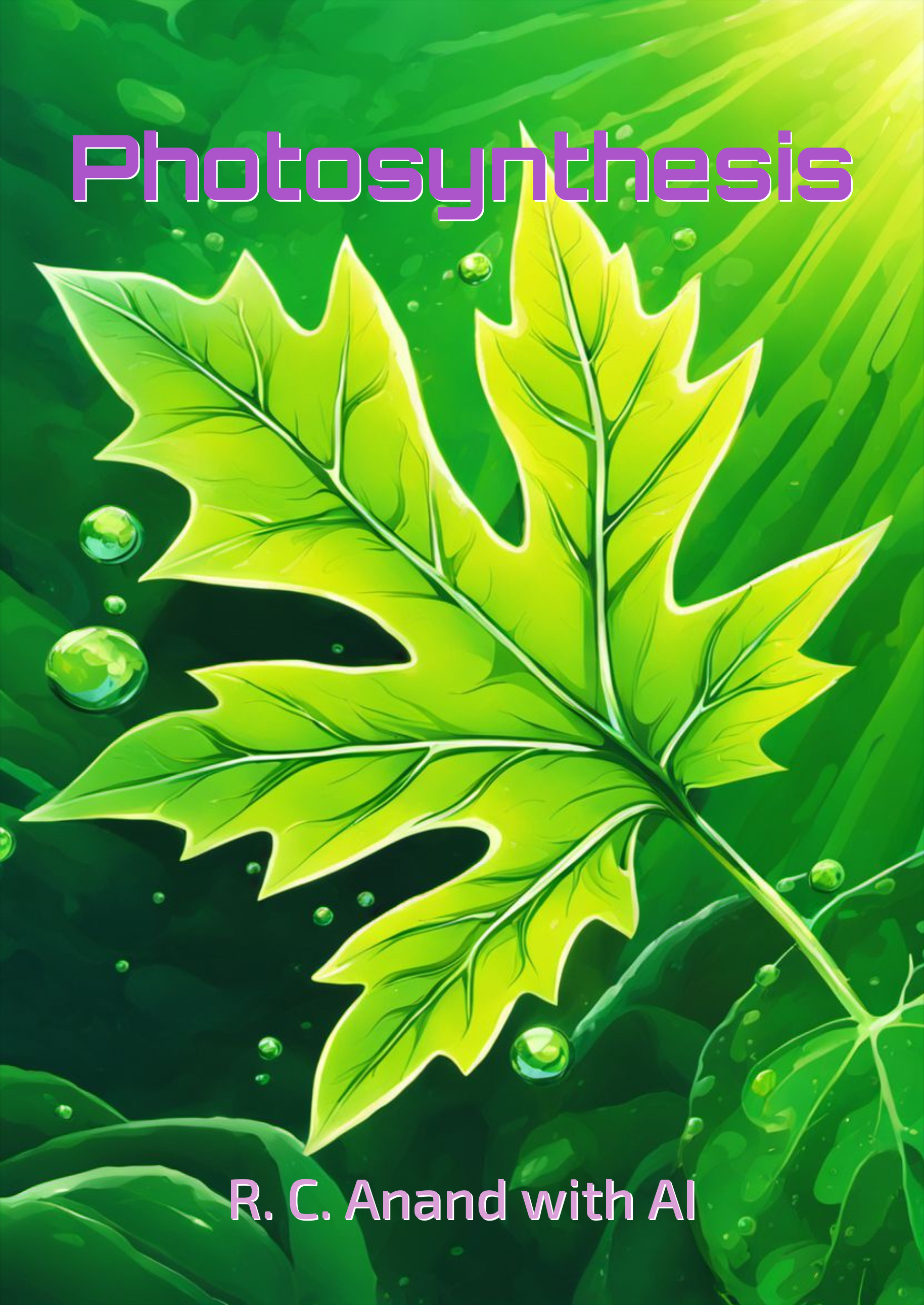
Table of contents for Photosynthesis visual guide v1
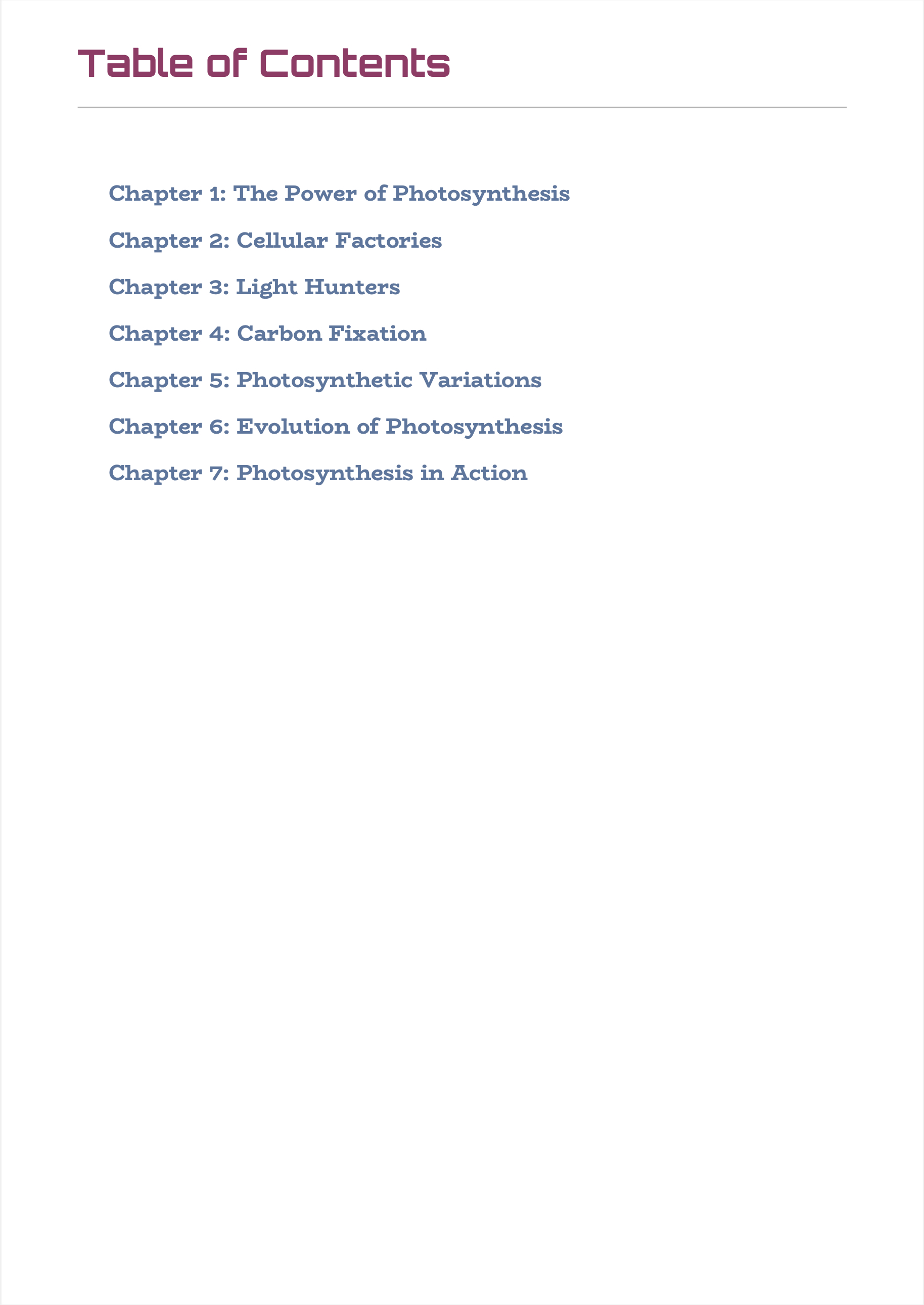
Cover of Photosynthesis visual guide v2
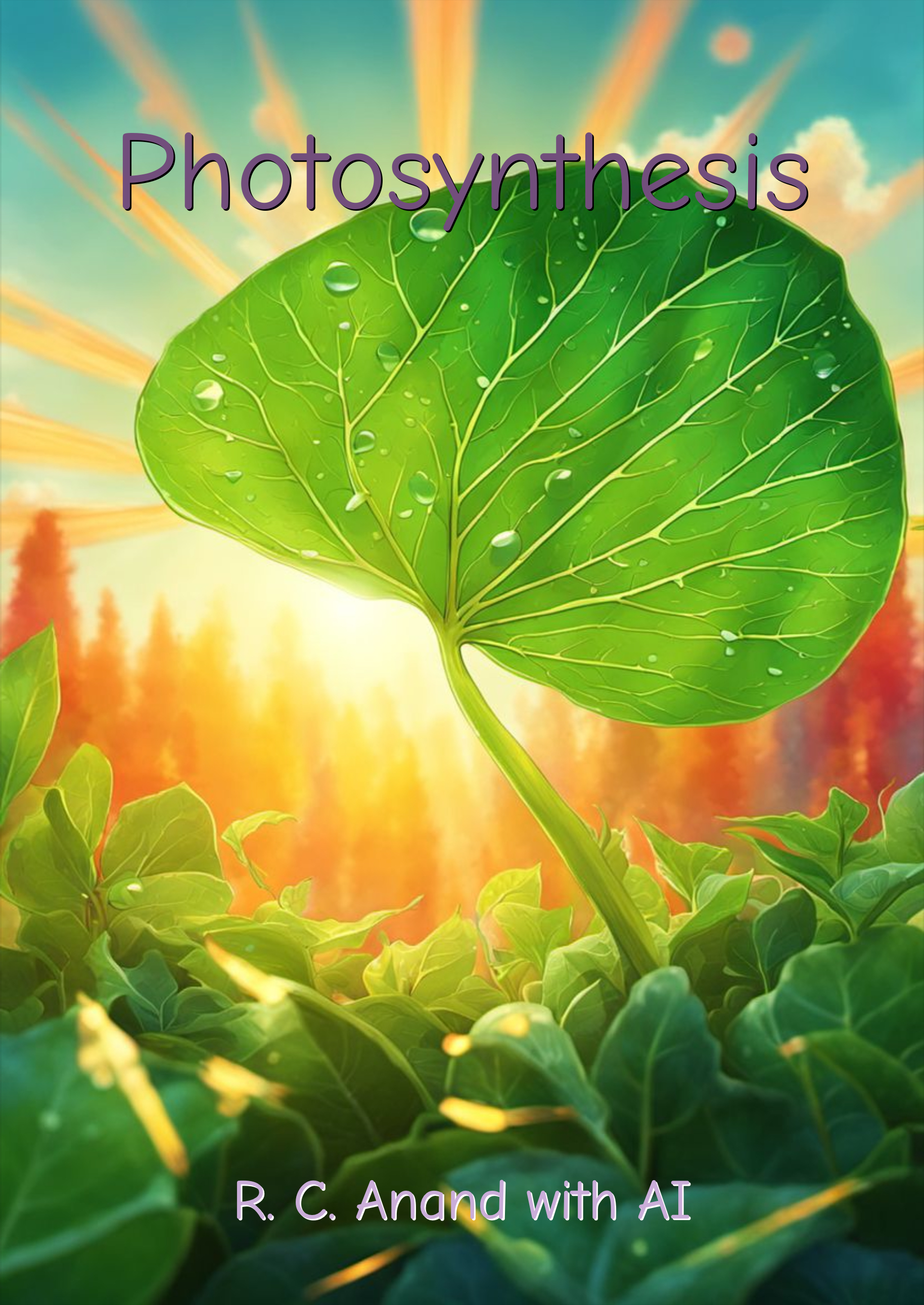
Table of contents for Photosynthesis visual guide v2
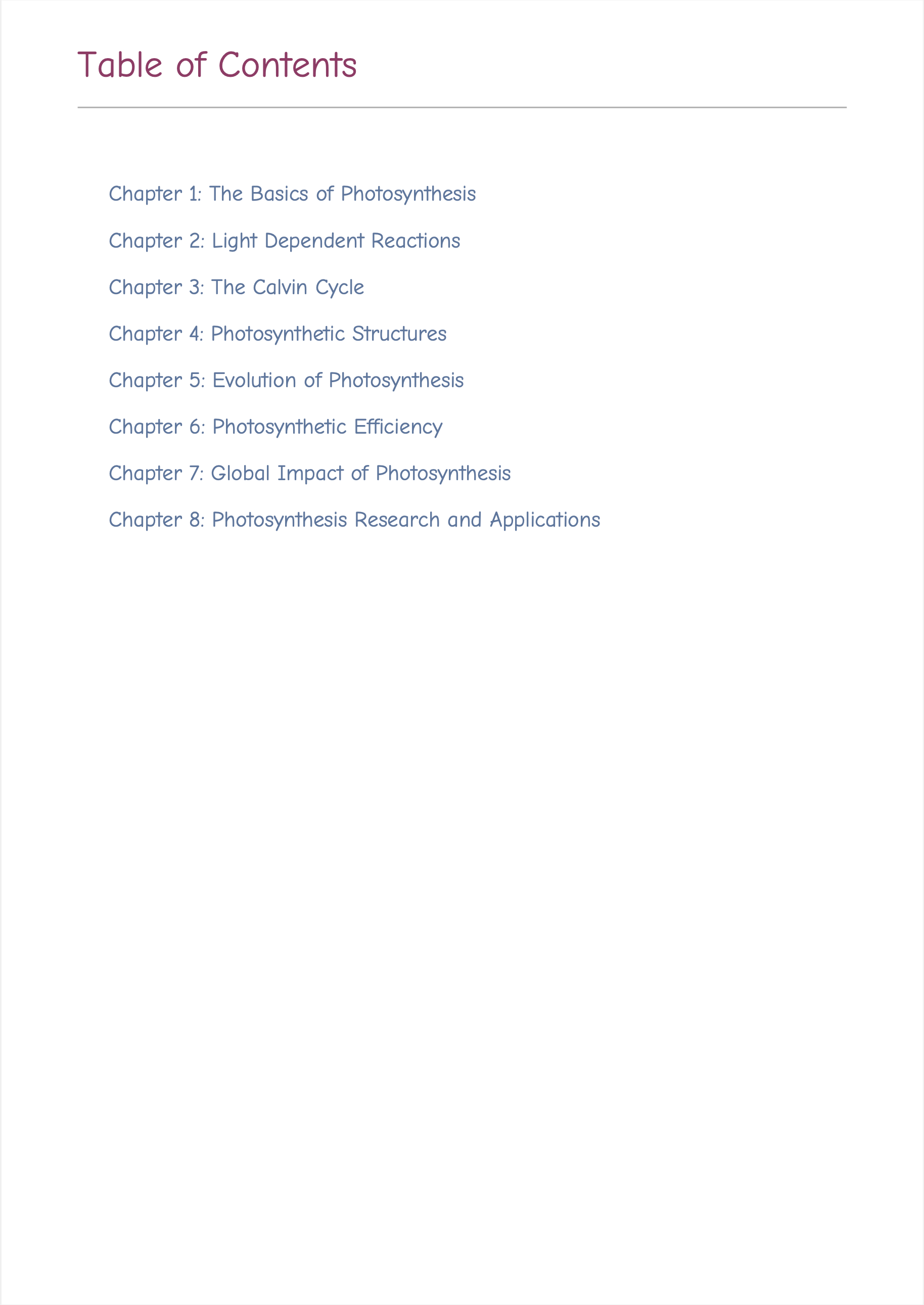
Topic Suitability and Handling
Photosynthesis is an excellent topic for an AI-generated visual guide:
Complex processes: Photosynthesis involves multiple steps and intricate molecular interactions, which benefit from visual explanations.
Microscopic scale: The guide can visualize cellular and molecular structures that are not visible to the naked eye.
Global impact: The guide can illustrate the broader ecological and environmental implications of photosynthesis.
Interdisciplinary nature: Photosynthesis touches on biology, chemistry, and environmental science, allowing for diverse content.
Content Analysis
1. Basics of Photosynthesis
Overview of photosynthesis process (v1, pages 2-3)
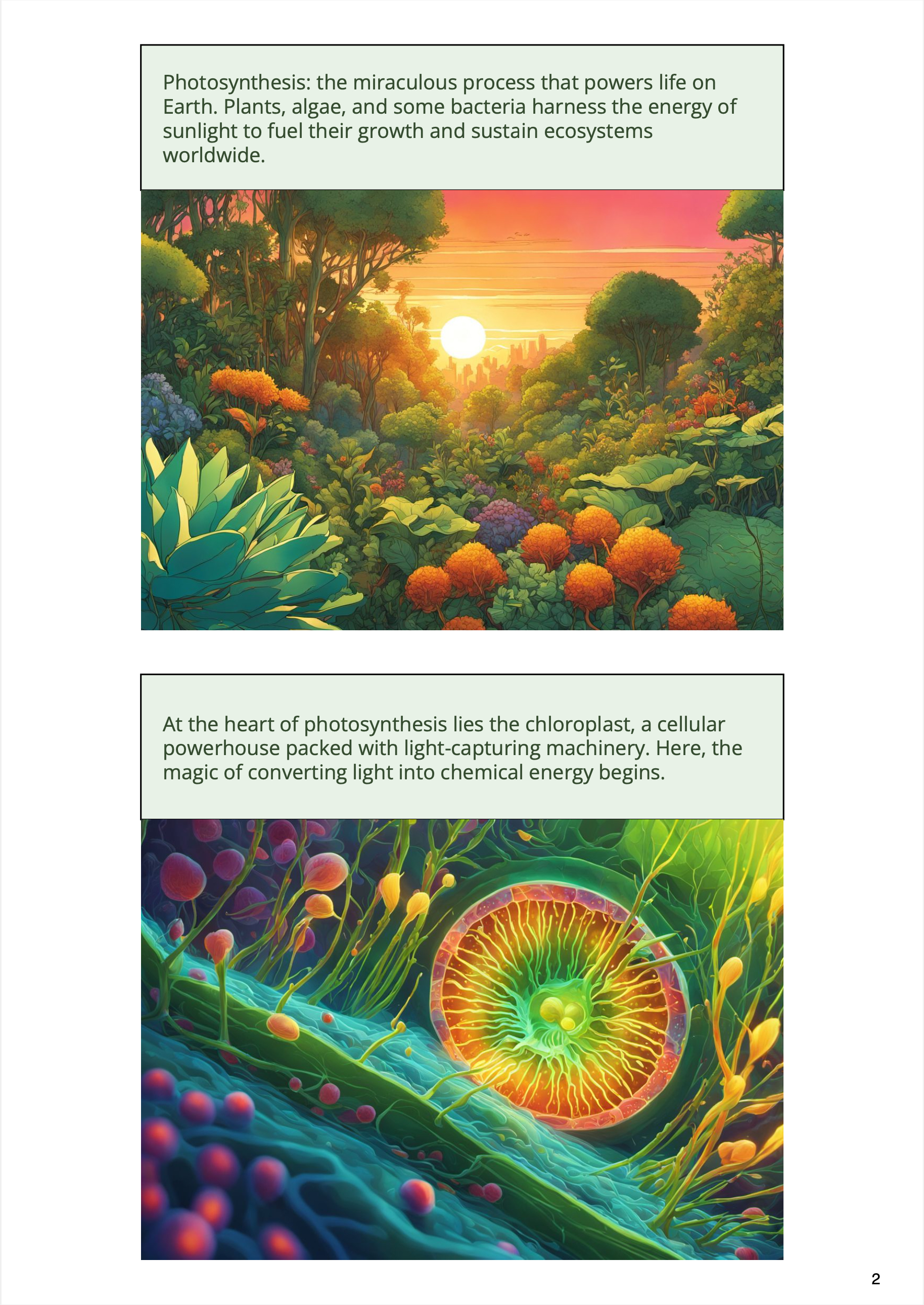
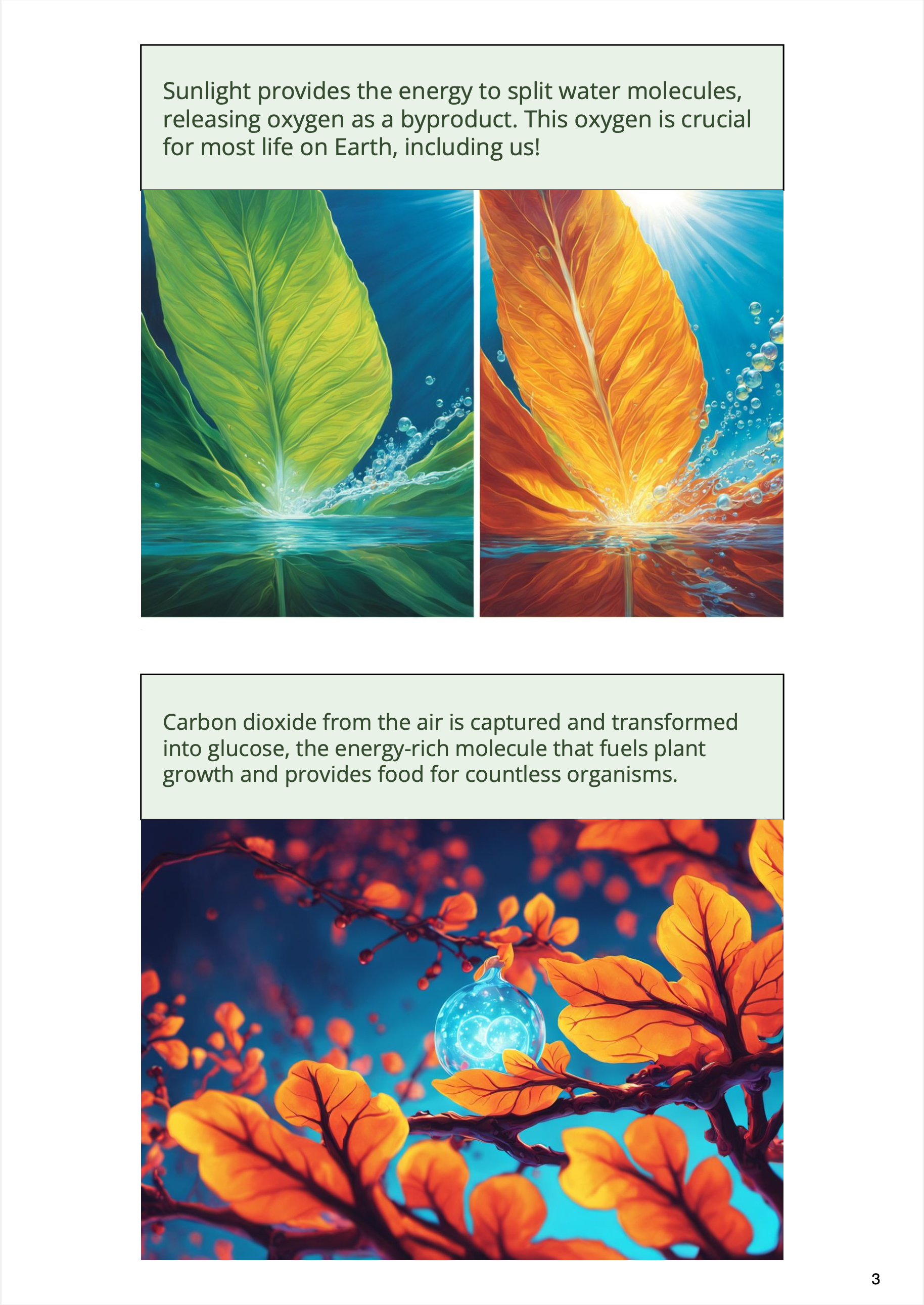
Both versions begin with a clear introduction to photosynthesis, explaining its fundamental role in converting light energy into chemical energy.
Positive Aspect: The guides provide accessible explanations of complex biochemical processes, making them understandable for a general audience.
Who Benefits:
High school and undergraduate students studying biology
Lifelong learners interested in understanding basic life processes
Educators looking for visual aids to explain photosynthesis
2. Cellular Structures and Mechanisms
Detailed chloroplast structure (v2, pages 14-15)
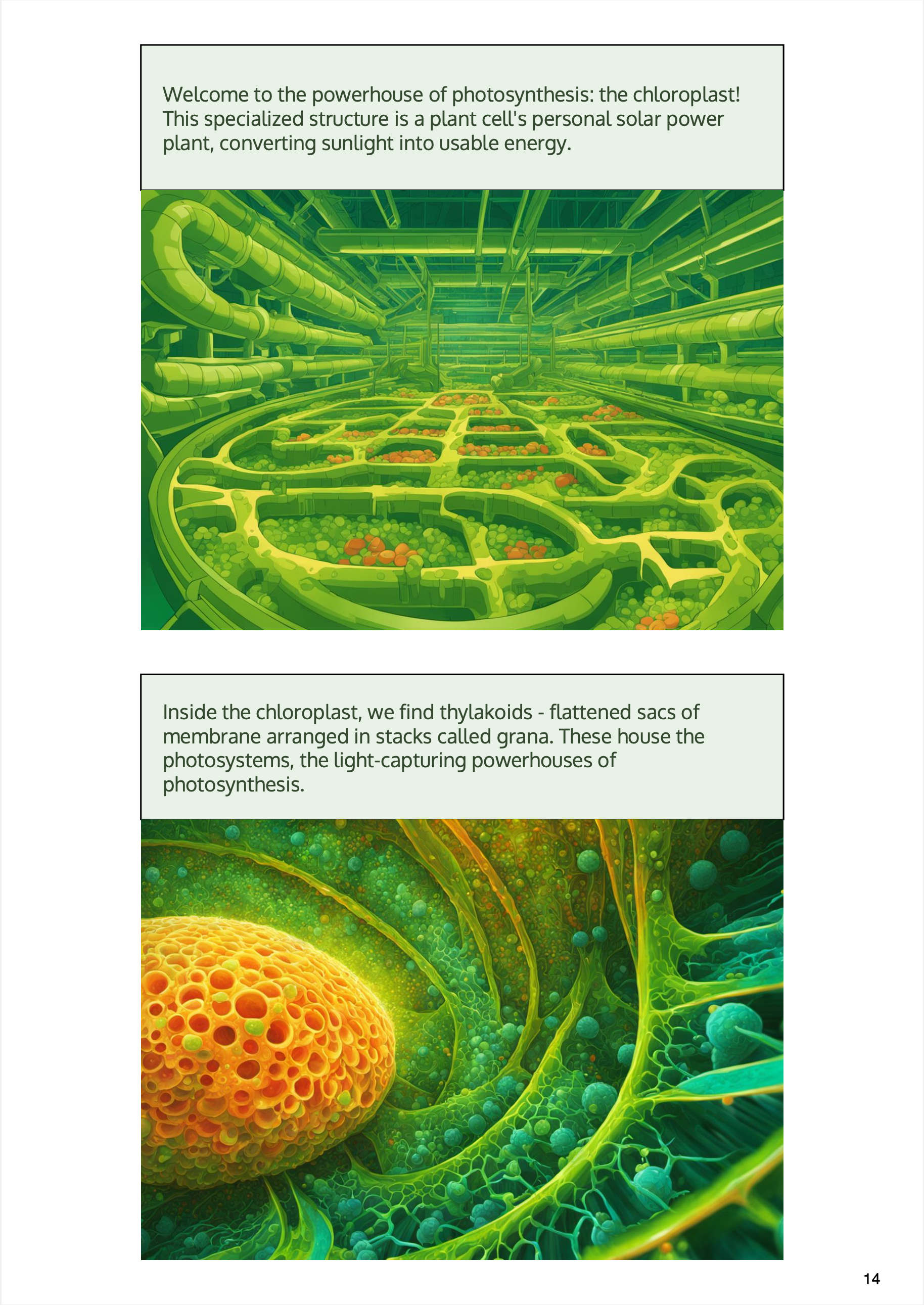
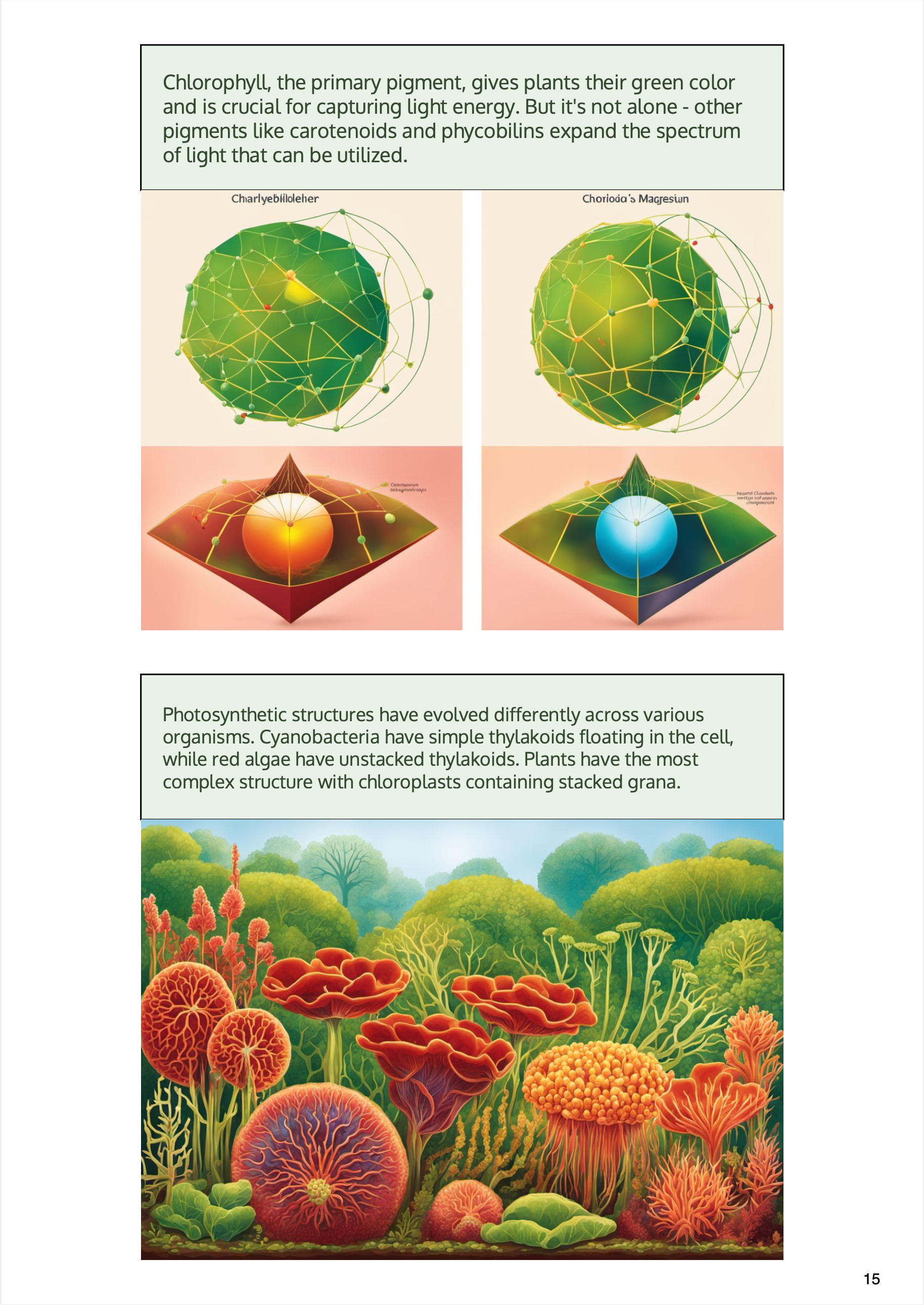
The guides excel at depicting the intricate structures involved in photosynthesis, from chloroplasts to thylakoid membranes.
Interesting Nuance: The AI-generated images provide unique visualizations of cellular structures, offering fresh perspectives on familiar concepts.
Text in images: The top panel on v2 page 15 shows a common problem with AI image generators - when the images contain text, the text is often garbled or nonsensical. I have taken great efforts to minimize appearance of text in images, but a few do slip by as seen here.
Who Benefits:
Biology and biochemistry students at all levels
Researchers needing creative visualizations for presentations or publications
Science illustrators looking for inspiration
3. Light-Dependent Reactions and Calvin Cycle
Light-dependent reactions of photosynthesis (v1, pages 10-11)
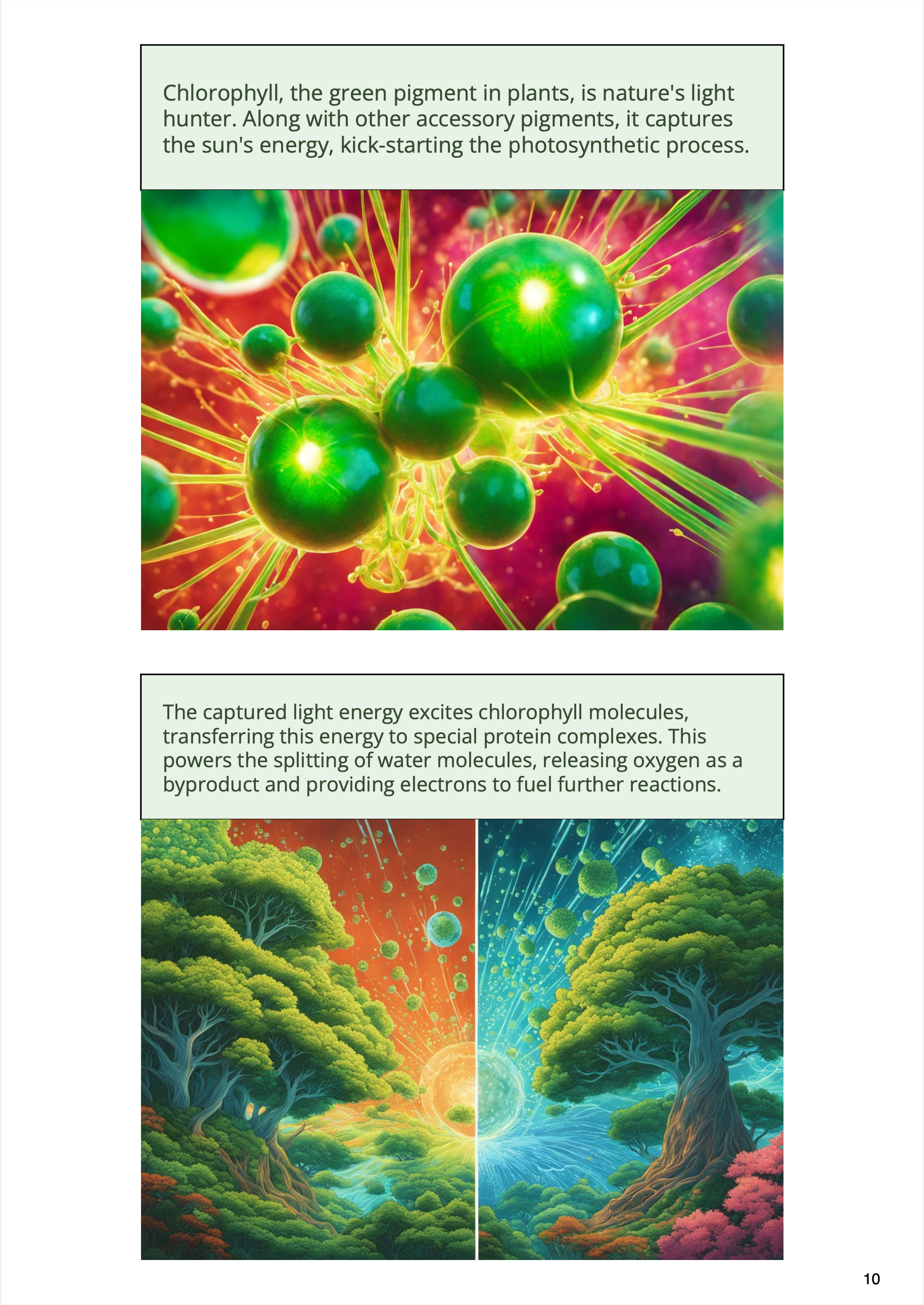
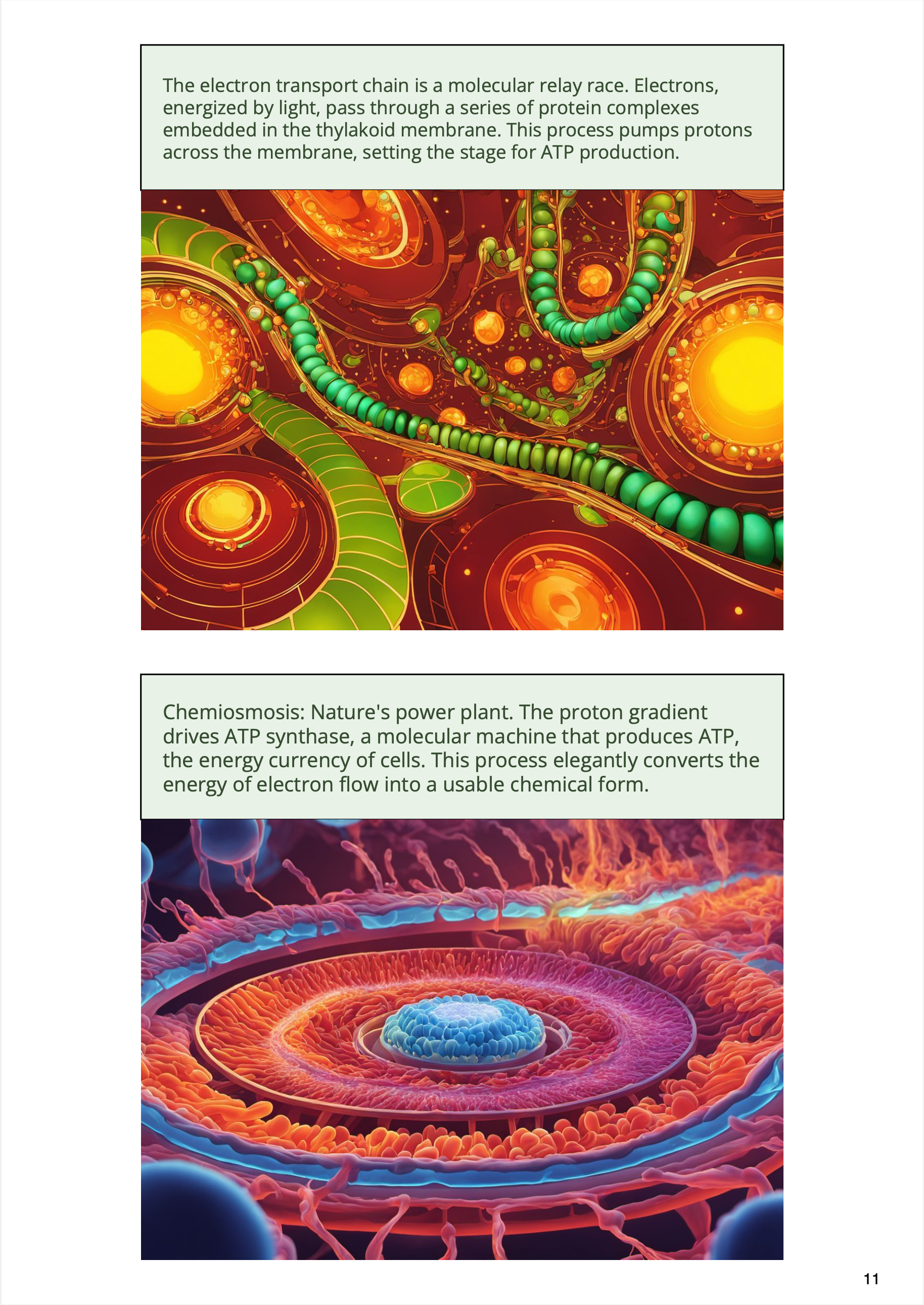
Both guides offer detailed explanations of the two main stages of photosynthesis: the light-dependent reactions and the Calvin cycle.
Positive Aspect: Complex biochemical pathways are broken down into understandable steps, with clear visual representations of each stage.
Who Benefits:
Advanced high school and university students studying plant biology or biochemistry
Educators teaching photosynthesis at various levels
Researchers needing a quick reference for photosynthetic processes
4. Evolution and Ecological Impact
Evolution of photosynthesis (v2, pages 18-19)
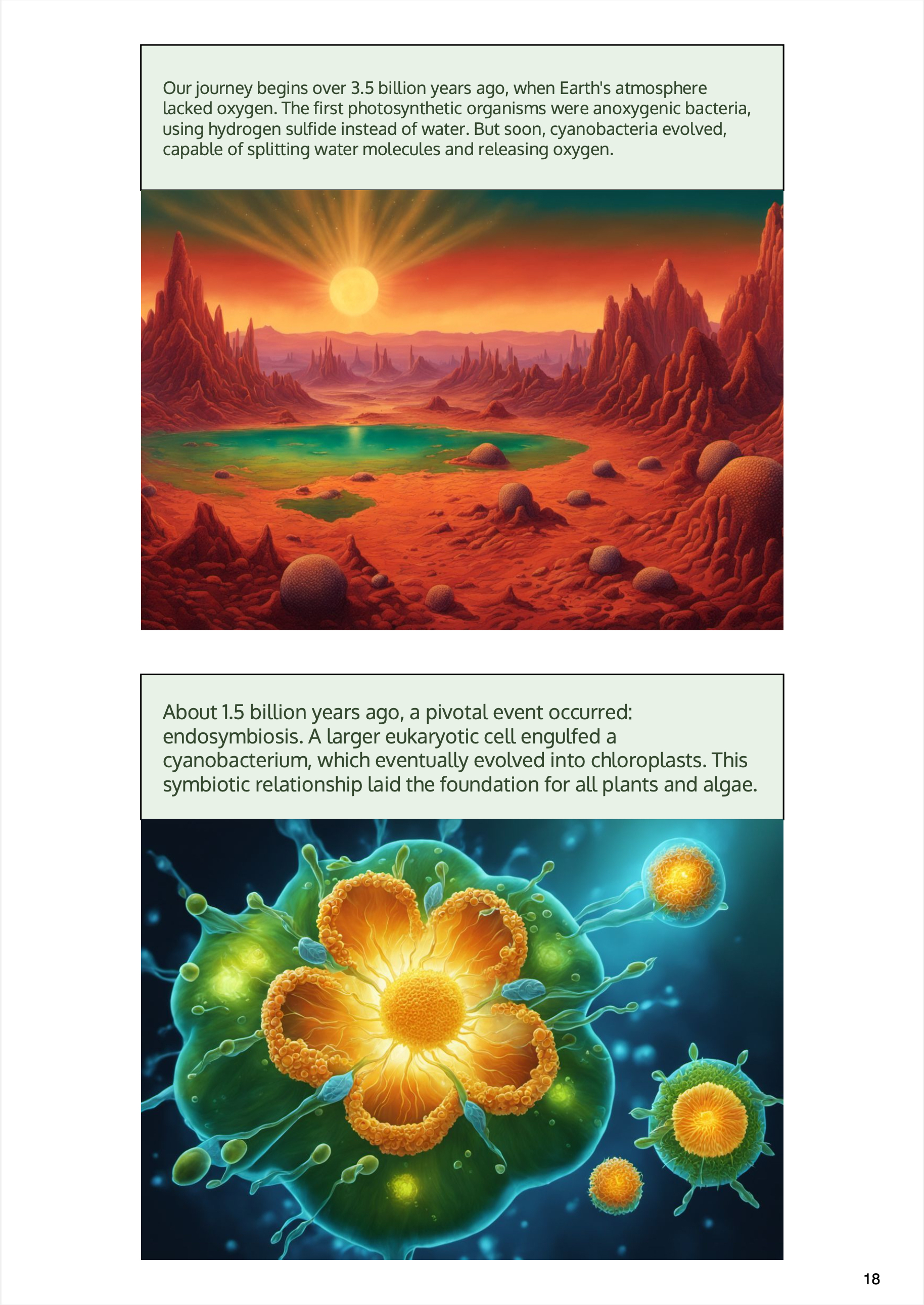
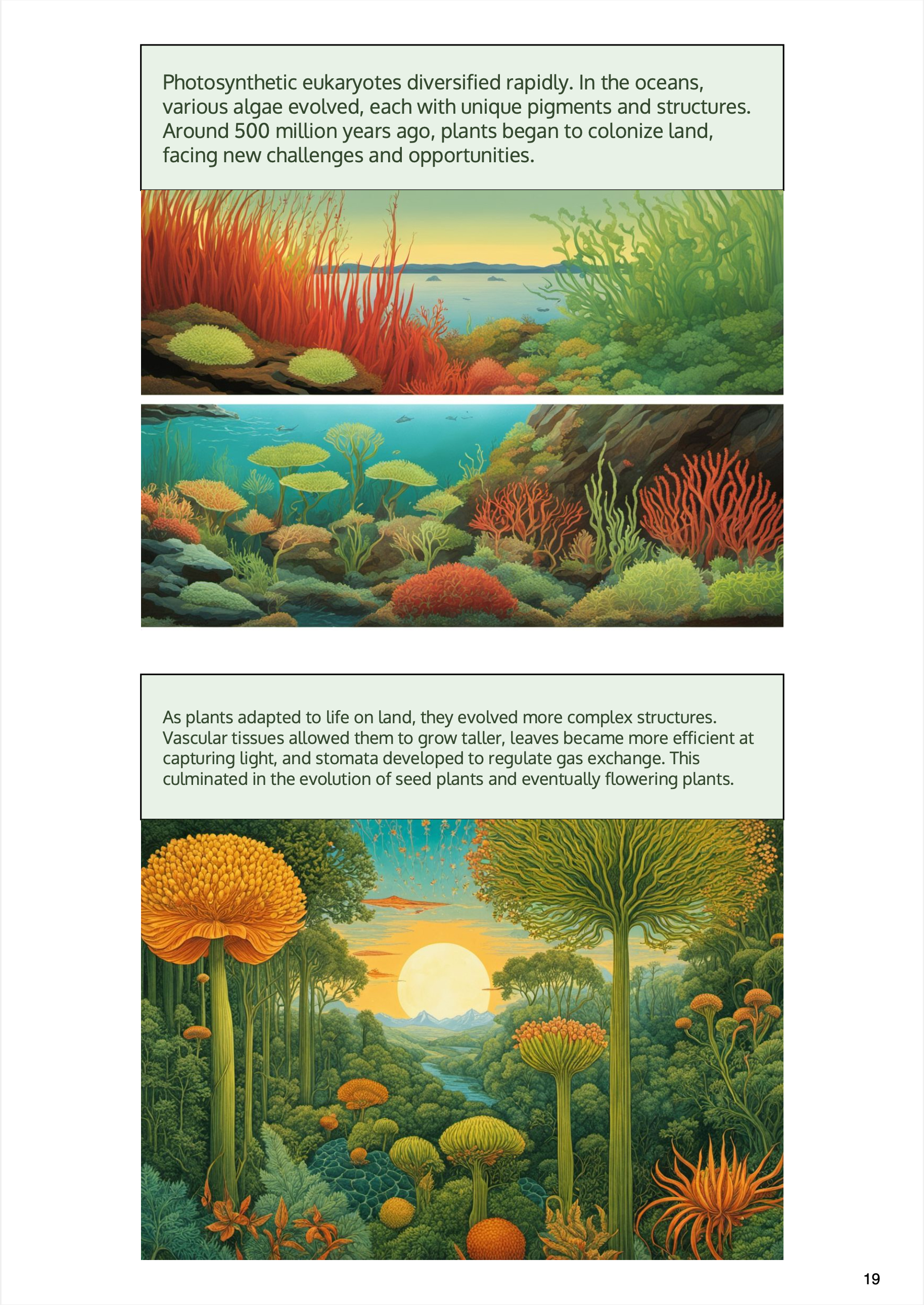
The guides explore the evolutionary history of photosynthesis and its global impact on Earth's ecosystems.
Interesting Challenge: The AI manages to create compelling visualizations of abstract concepts like evolutionary timelines and global ecological processes.
Who Benefits:
Environmental science students and researchers
Ecologists and earth scientists
Policy makers and environmental educators needing to communicate the importance of photosynthesis
5. Modern Research and Applications
Modern applications of photosynthesis research (v2, pages 30-31)
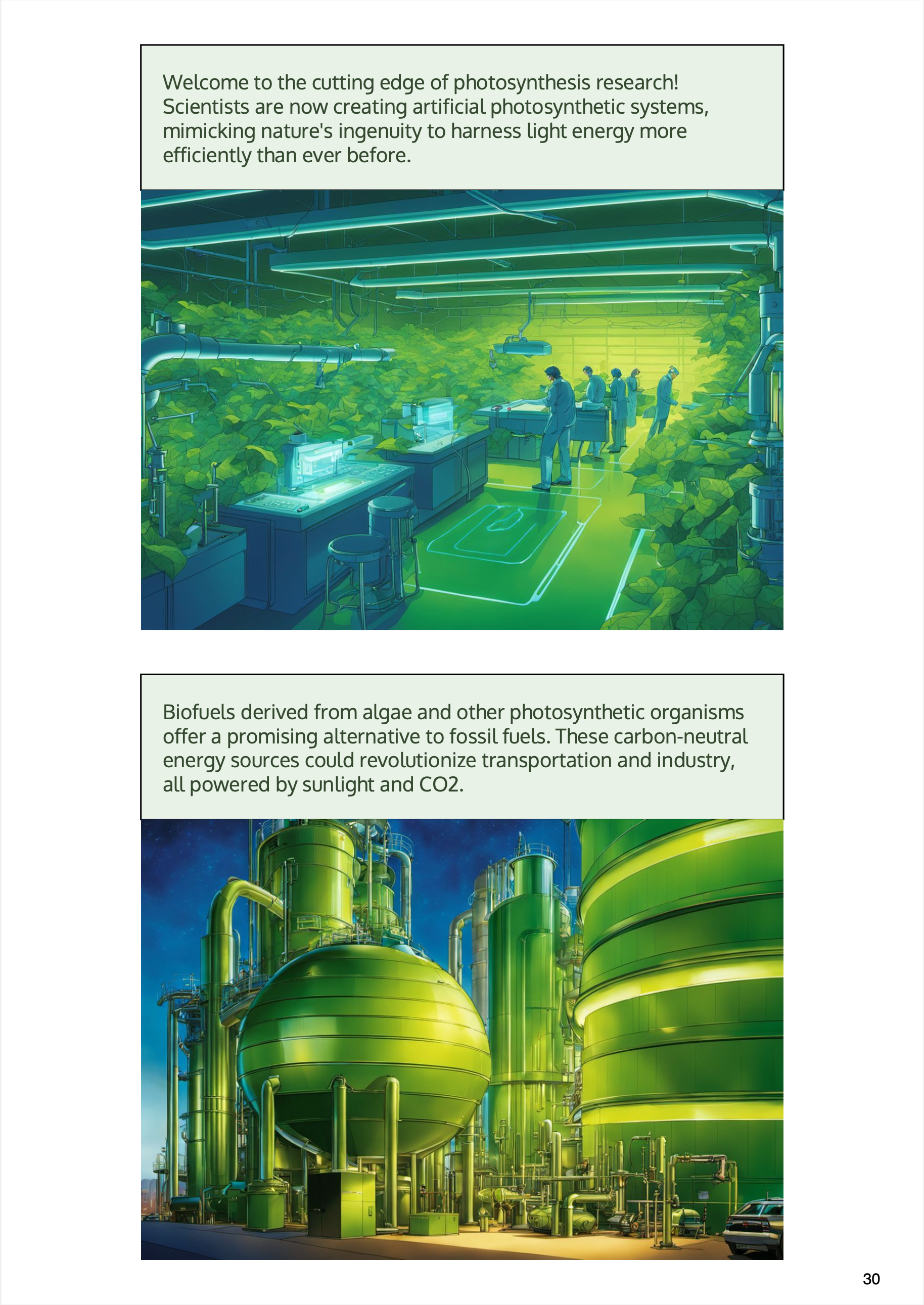
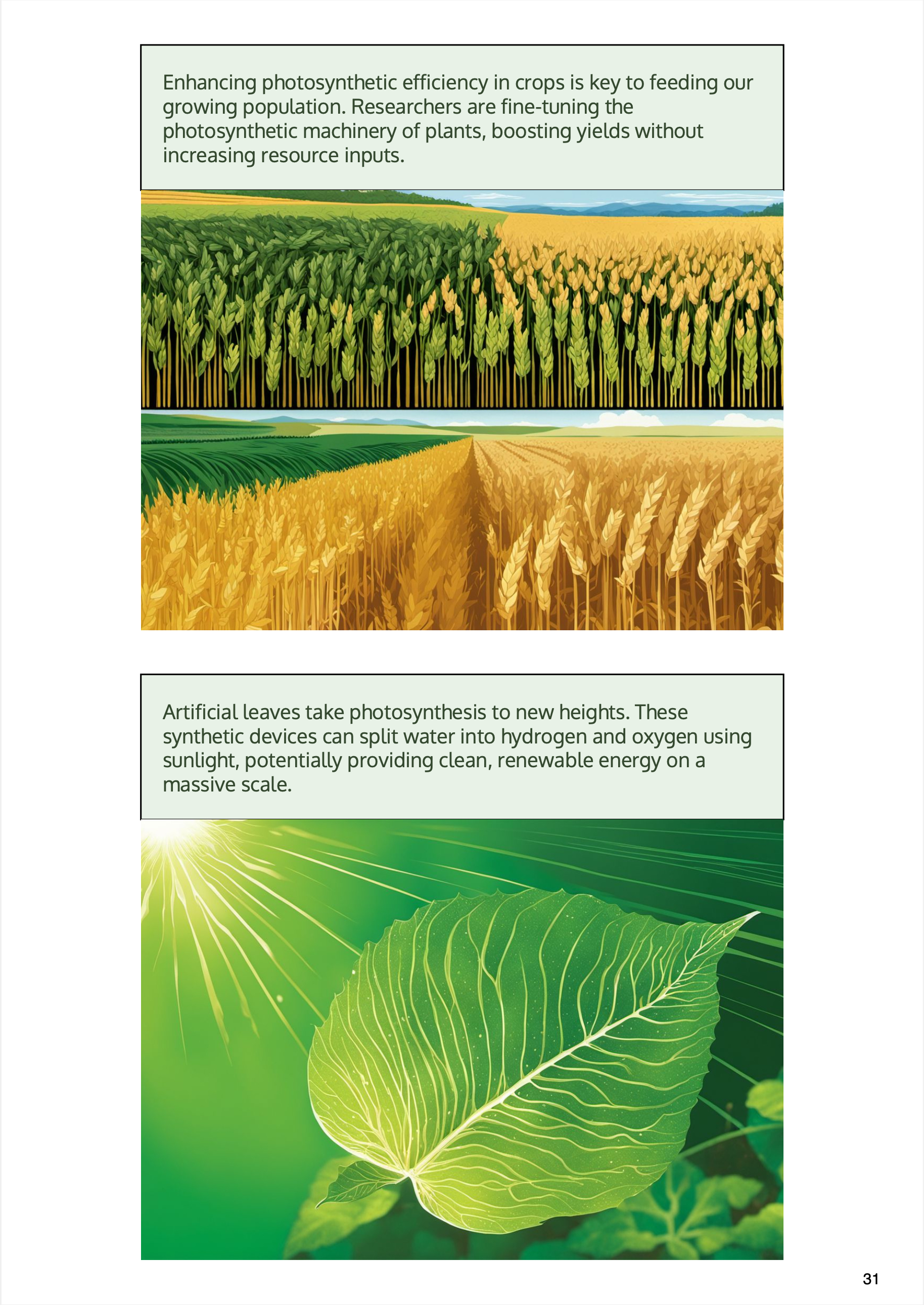
Both versions touch on cutting-edge research in photosynthesis, including artificial photosynthesis and biofuel production.
Positive Aspect: The guides connect fundamental science to modern applications, showcasing the relevance of photosynthesis research.
Who Benefits:
Biotechnology and engineering students
Researchers in fields like renewable energy and agricultural science
Entrepreneurs and investors interested in green technologies
Educational Value and Accuracy
Comprehensive Coverage: Both guides offer a thorough exploration of photosynthesis, from basic principles to advanced concepts and modern applications.
Visual Learning: The AI-generated images provide unique and engaging visualizations of complex processes, enhancing understanding through visual learning.
Interdisciplinary Connections: The guides effectively link photosynthesis to broader topics in chemistry, ecology, and even technology, providing a holistic view of the subject.
Accuracy: While the general principles and processes are accurately represented, users should always cross-reference with peer-reviewed sources for the most up-to-date scientific information.
Who Can Benefit from These Visual Guides
The Photosynthesis visual guides can be valuable resources for a wide range of individuals:
Students: From high school biology students to graduate-level biochemistry researchers, these guides offer visualizations and explanations that can supplement traditional textbooks and lectures.
Educators: Teachers and professors can use these guides as visual aids in their lessons, providing engaging illustrations of complex processes.
Researchers: Scientists in fields related to plant biology, biochemistry, and ecology can find fresh perspectives and visual inspiration for their work and presentations.
Science Communicators: Journalists, writers, and documentary makers focusing on biology or environmental topics can use these guides to better understand and communicate about photosynthesis.
Environmental Professionals: Those working in fields like conservation, climate change mitigation, or sustainable agriculture can gain a deeper understanding of this fundamental biological process.
Biotechnology and Green Energy Professionals: Individuals working on artificial photosynthesis, biofuels, or other plant-based technologies can use these guides as a reference and inspiration.
Artists and Illustrators: Those creating science-based art or illustrations can find unique visual interpretations of scientific concepts.
Lifelong Learners: Anyone with a curiosity about how the natural world works can benefit from these accessible yet comprehensive guides.
Conclusion
The Photosynthesis visual guides demonstrate the power of AI-generated educational content to make complex scientific topics accessible and engaging. By combining clear explanations with unique visualizations, these guides offer valuable resources for a diverse audience, from students and educators to professionals and curious individuals.
While these guides should not replace traditional academic resources, they serve as excellent supplementary materials, offering fresh perspectives and visual aids that can enhance understanding of this crucial biological process. As AI technology continues to evolve, we can expect even more sophisticated and tailored educational resources that cater to a wide range of learning styles and needs.
You can get these visual guides here.
About me
I am a software/AI/product engineer/scientist conducting cutting-edge research in modern generative AI. Please consider buying my AI-generated visual guides at the store to support my work. It will also help me immensely if you spread the word, comment, like, and share my posts about haixu. Thank you!
Subscribe to my newsletter
Read articles from Anand (RC) directly inside your inbox. Subscribe to the newsletter, and don't miss out.
Written by

Anand (RC)
Anand (RC)
I am currently working on generative AI, currently text+image experiences, educational AI generated visual guides in various mediums (comic, video, etc.). Before that, I was building llm apps with chat models, evaluating GPTs and Assistants API. Before that worked in conversational AI. Prior to that, have worked on many things product, software, AI, ML.